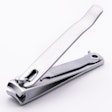
Many areas of the western U.S. have seen above average snow and moisture levels and below average temperatures this spring.
As growers dig into spring planting, the wet weather will increase soil moisture and likely lead to a later-than-usual planting.
And for grain elevators and processors, cool, wet weather has its own challenges, including proper storage to keep grain quality in top condition.
For best results, Scott McIntosh, vice president of operations at Columbia Grain International offers these 5 tips to keep grain stored properly and in good condition during a wet, cold spring.
- Inspect all sump pumps to ensure they are functioning
- Inspect bin roofs to find holes or open hatches
- Review your site to make sure all drain waterways are free of debris
- Turn your fans systems off on heavy rain or high humid days
- Keep the grain dump covered when not in use
Technology can help you know your grain's condition
If you always know what’s going on inside your grain bins, you can take quickly take corrective action, said Tri-States Grain Conditioning. Aeration fans usually do the trick and with today's grain inventory management technology, you can save money knowing when and when not to run fans.
A new free mobile app with tools for grain aeration management is now available for iPhone or Android devices. The Grain Aeration & Storage app is a collaboration between the National Institute of Agricultural Technology and Iowa State University, and was developed by former ISU student Dr. Ricardo Bartosic and Dr. Dirk Maier, a biosystems engineering professor at ISU and director of the Kent Feed Mill and Grain Science Complex.
The app offers three post-harvest engineering tools: Cooling Aeration Prediction, Aeration Weather Forecast and Air-Grain Moisture Relationship.
Available in both English and Spanish, the app is designed to offer grain facility managers easy access to data to help them improve grain quality, prevent shrinkage and boost profitability.
Always monitor your grain's temperature
By far the best way to prevent grain spoilage is with frequent grain temperature monitoring. Grain should be checked every 14 days during spring and summer, at a minimum, said Tri-States.
It's recommended to keep grain at approximately 40° during spring and summer. No more than 50° maximum. These temperatures keep insects dormant and deter mold.
Avoid infestation by cleaning and sterilizing bins, and loading them with good condition insect-free grain. Chill grain to 20° in winter months to kill insects and eggs on the drying floor and in the bin.
Tri-States notes to focus on best practices to to keep stored grain in the best condition over the long haul: Promptly get good condition grain dried, weight tested, and stored in sanitized bins. Store newly harvested grain separately from old grain. Get grain to the proper temperature and moisture content for long-term storage. Monitor grain frequently for changes in temperature, which indicates storage problems. Address problems before they get out of hand.
For more information about grain aeration and determining the Equilibrium Moisture Content (EMC) of stored grain, watch the on-demand recording of SLAM 360: The full circle of grain quality preservation, and register for Part 2 of our webinar series, SLAM 360: Control airflow & temperature for maximum grain value (registration opening soon!).



















